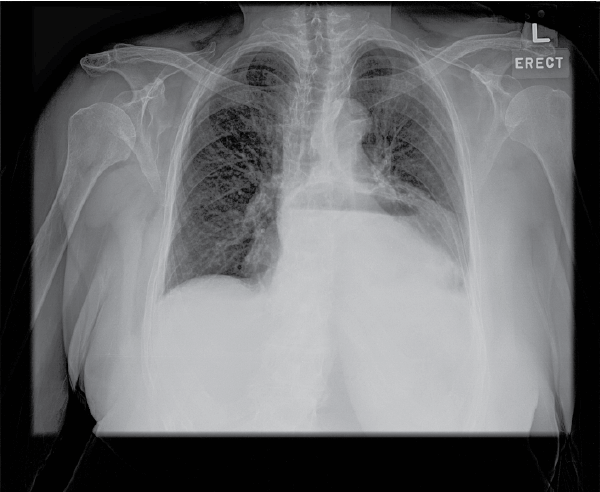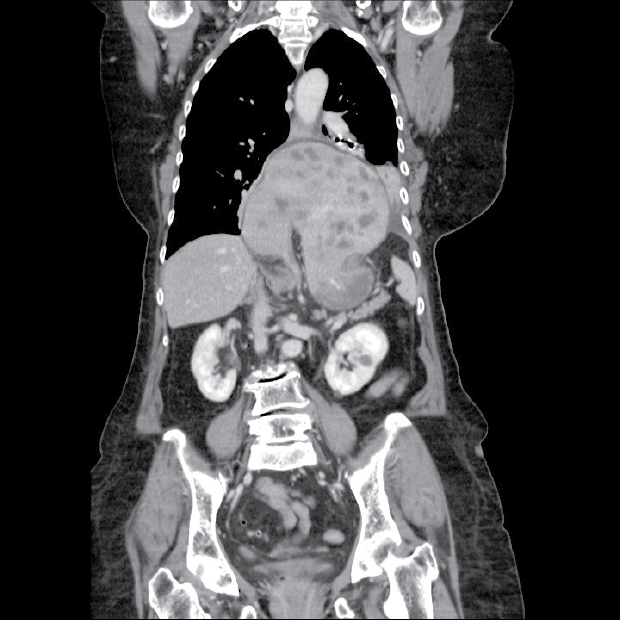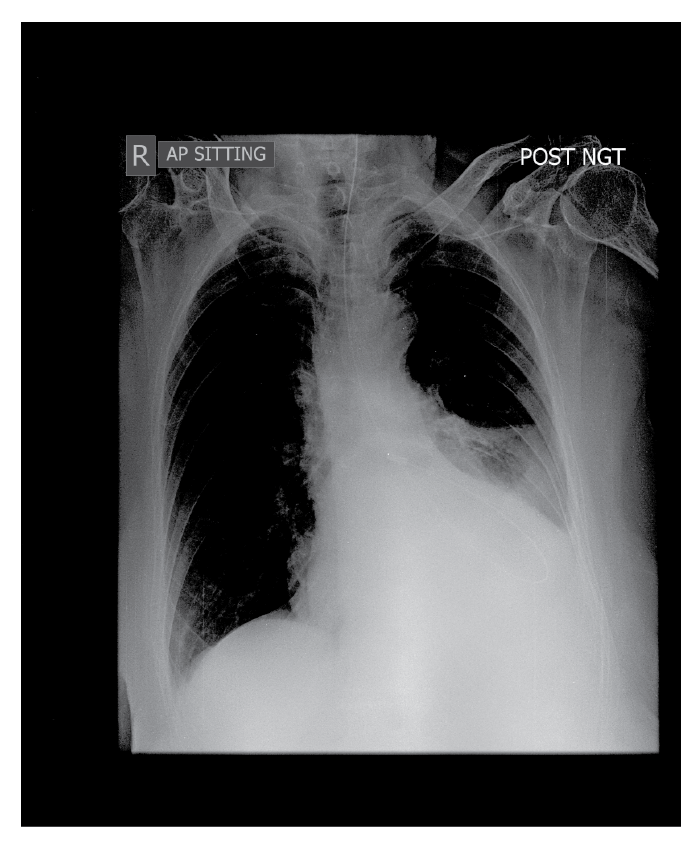
Figure 1: Chest x-ray revealing air-fluid level in the intra-thoracic portion of the stomach.

Malcolm Tan* Ennaliza Salazar
Department of Gastroenterology and Hepatology, Changi General Hospital, Singapore*Corresponding author: Malcolm Tan, MBBS, MRCP, Department of Gastroenterology and Hepatology, Changi General Hospital, 2 Simei Street 3 529889, Singapore, Tel: +6596252656; E-mail: dr.malcolm@gmail.com
Gastric volvulus is characterized by abnormal rotation of the stomach along either its long or short axis, giving rise to acute or chronic gastric outlet obstruction. Rotation beyond 180 degrees can potentially lead to strangulation and ischemia of the stomach, resulting in necrosis and perforation. Thus, it is important to consider it as a differential diagnosis as the outcomes may be deleterious [1].
A 75 year old Malay woman with significant past medical history of ischemic heart disease, diabetes mellitus, hypertension and hiatus hernia presented to our unit for acute onset of epigastric pain associated with vomiting. A year prior, she had been diagnosed with a large hiatus hernia on esophagogastroduodenoscopy done for gastro-intestinal evaluation of anemia. Vital signs were stable and cardiac evaluation for an acute myocardial event was unremarkable.
A chest x-ray was subsequent performed, revealing air-fluid level in the intra-thoracic portion of the stomach (Figure 1). A computed tomography of the thorax and abdomen was obtained, which demonstrated the same hernia, measuring 14cm at its largest intra-thoracic diameter, compressing on the left lower lobe bronchus and thus leading to left lower lobe partial collapse (Figure 2). A nasogastric (NG) tube was then inserted to decompress the stomach but this was unsuccessful, with the distal tip of the NG tube being restricted only to the intra-thoracic portion of the stomach (Figure 3).

Figure 1: Chest x-ray revealing air-fluid level in the intra-thoracic portion of the stomach.
The patient underwent laparoscopic repair of the paraoesophageal hernia with anterior 180 degrees partial fundoplication and was discharged well 2 weeks later.
Borchardt’s triad of pain, vomiting and inability to pass the NG tube is seen in up to 70% of patients with acute gastric volvulus [2]. This can be complicated by pancreatic, omental or splenic ischemia secondary to traction, haematemesis due to vomiting or perforation as a result of ischemia. Signs of volume depletion and metabolic disturbances due to vomiting may also be present.
Adequate resuscitation and decompression should be followed by surgery in fit candidates, with reduction of the stomach and repair of anatomical defects of the diaphragm [3].
The authors disclose no conflicts

Figure 2: Computed tomography of the thorax and abdomen demonstrating hernia.

Figure 3: Chest x-ray showing insertion of nasogastric (NG) tube, with the distal tip of the NG tube being restricted only to the intra-thoracic portion of the stomach.
Download Provisional PDF Here
Aritcle Type: Case Report
Citation: Tan M, Ozcan Salazar E (2016) Acute Gastric Volvulus. J Gastric Disord Ther 2(1): doi http://dx.doi.org/10.16966/2381-8689.113
Copyright: © 2016 Tan M, et al. This is an open-access article distributed under the terms of the Creative Commons Attribution License, which permits unrestricted use, distribution, and reproduction in any medium, provided the original author and source are credited.
Publication history:
All Sci Forschen Journals are Open Access